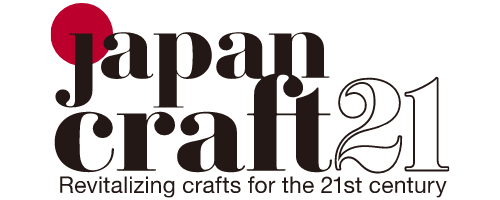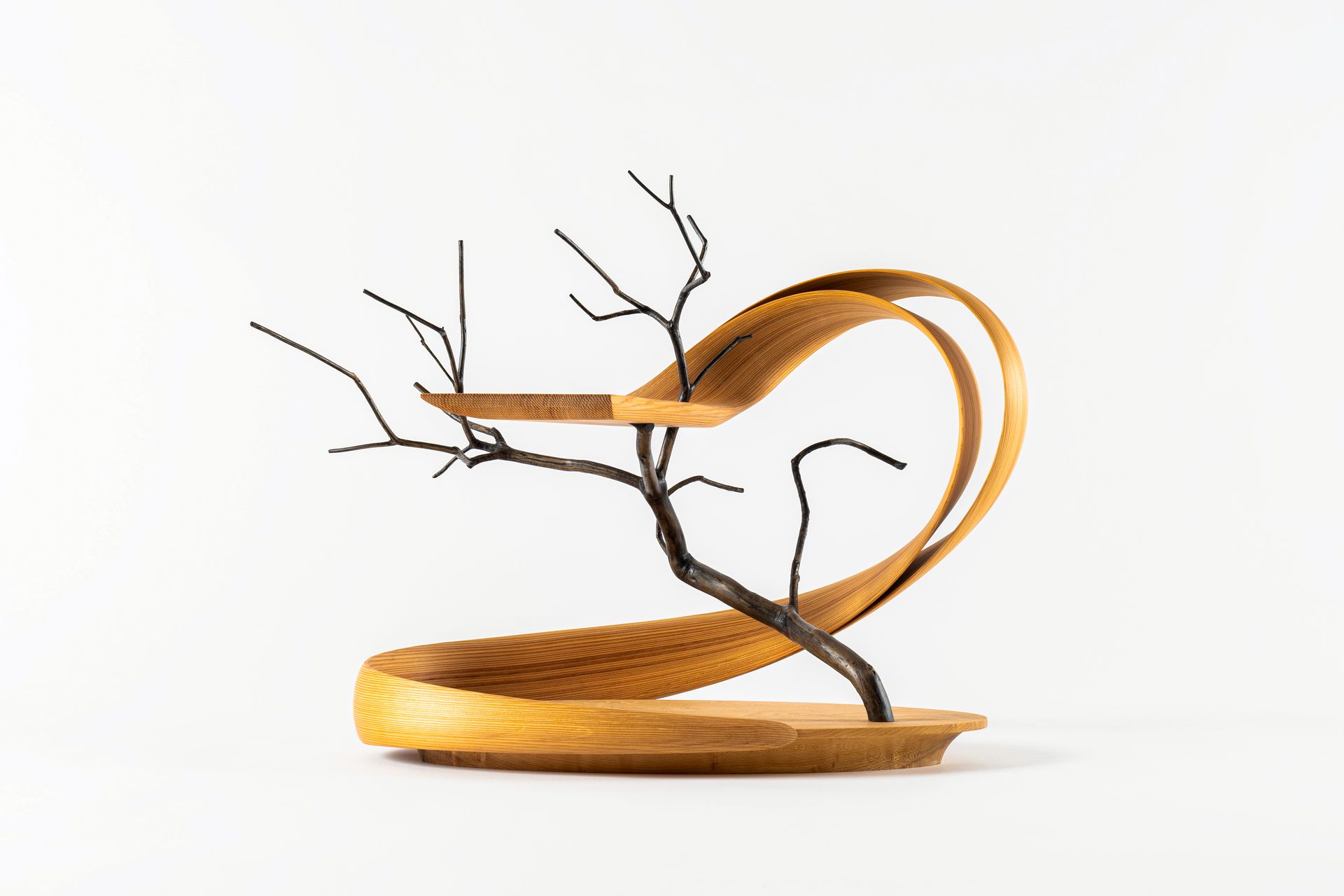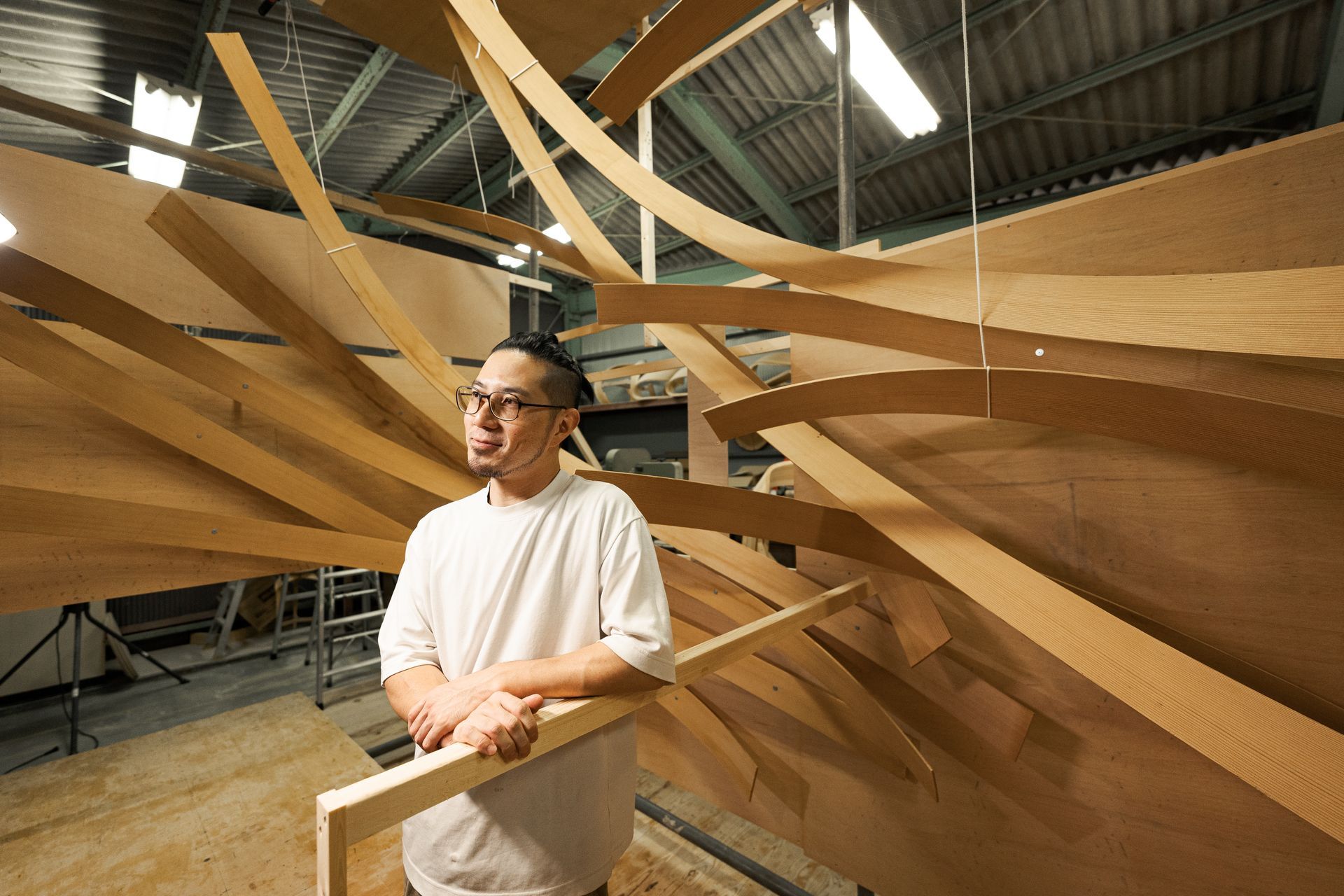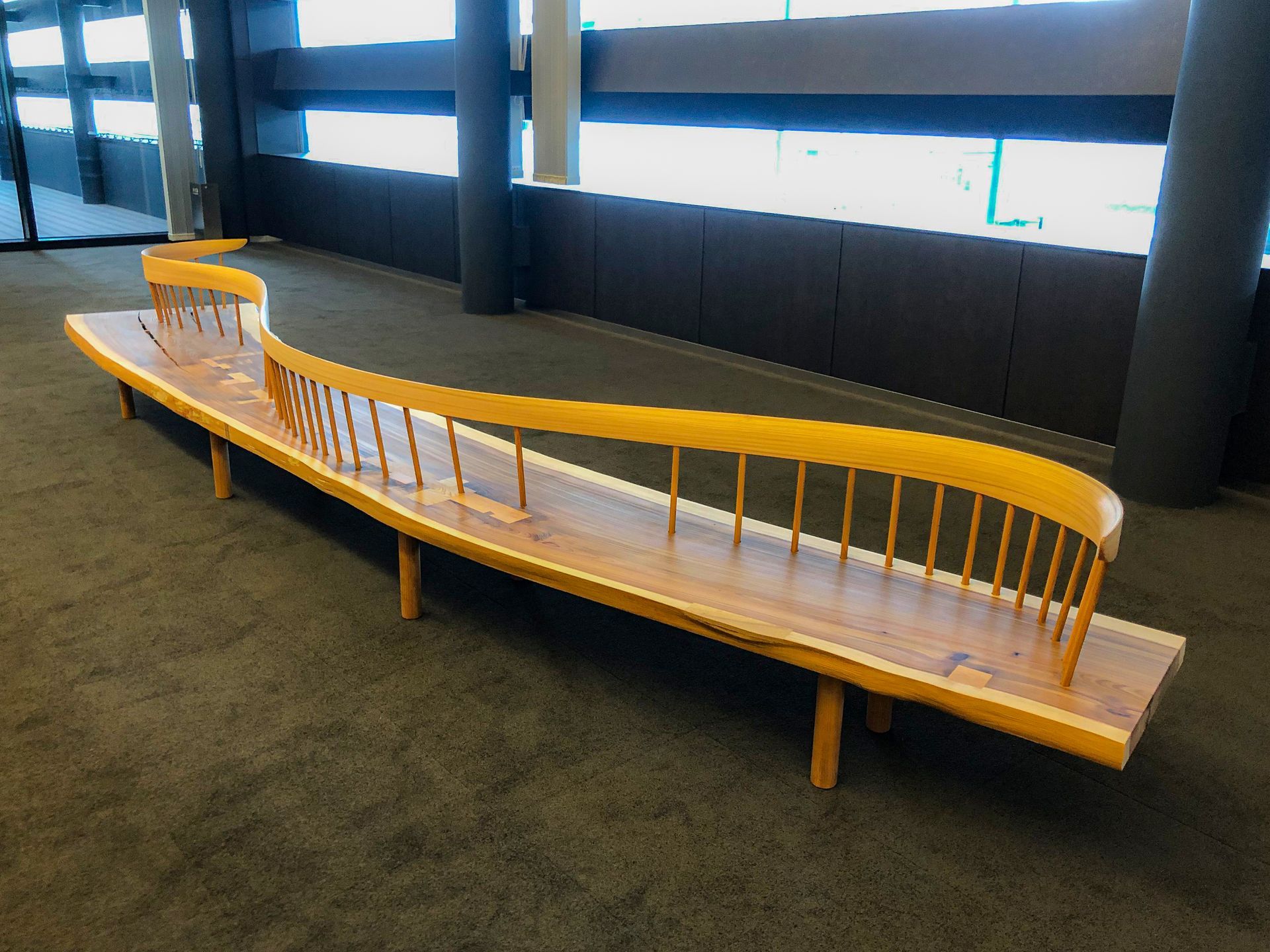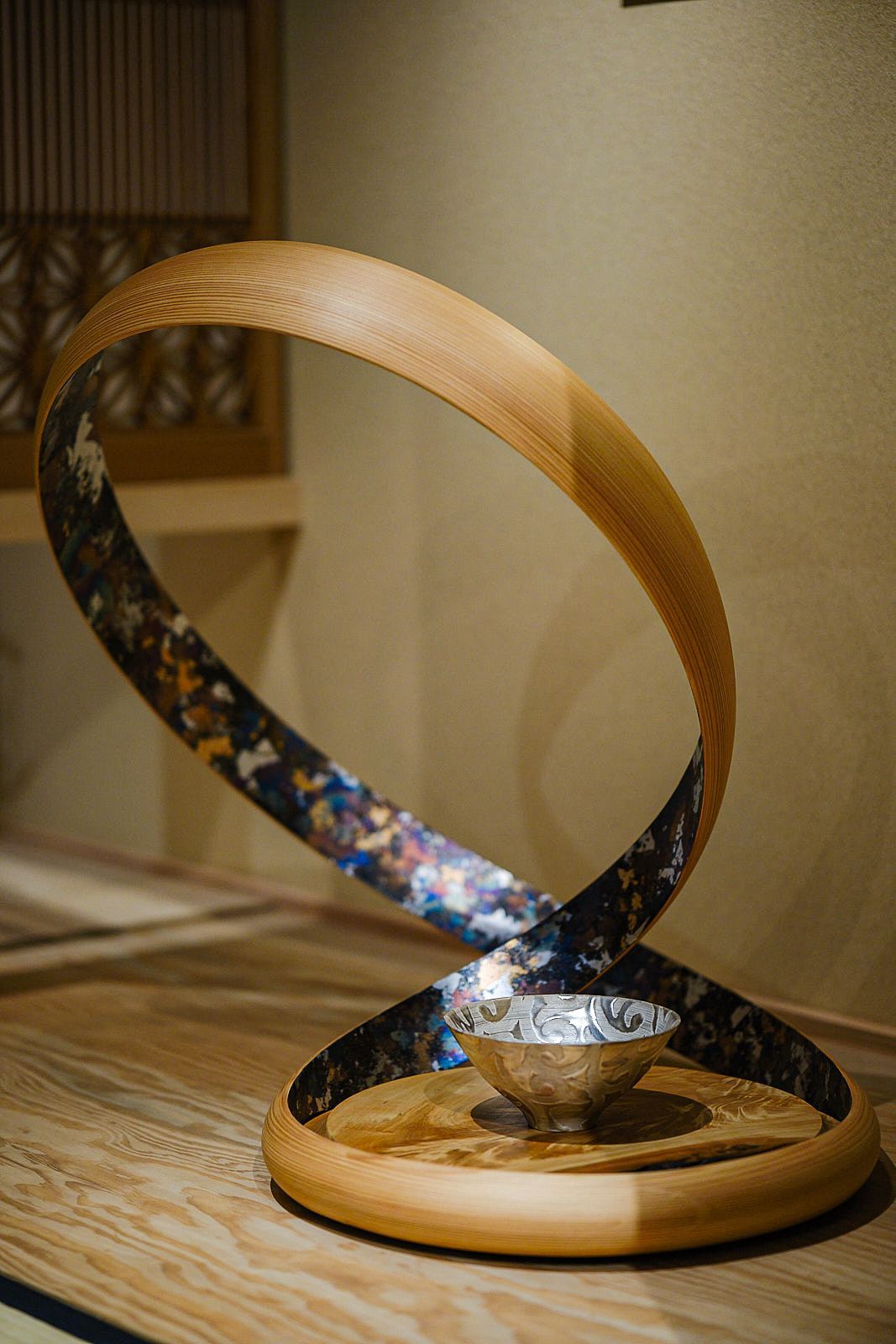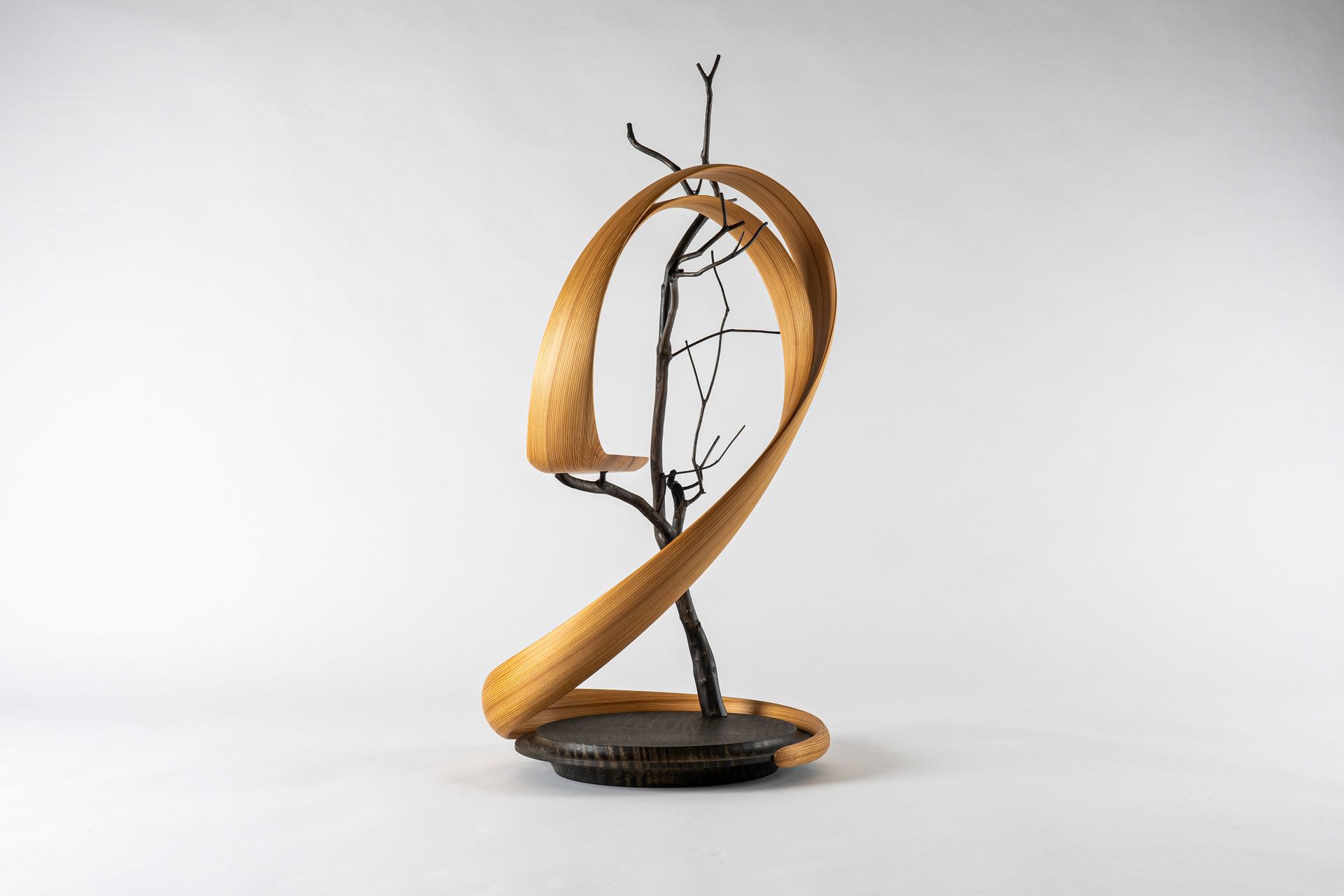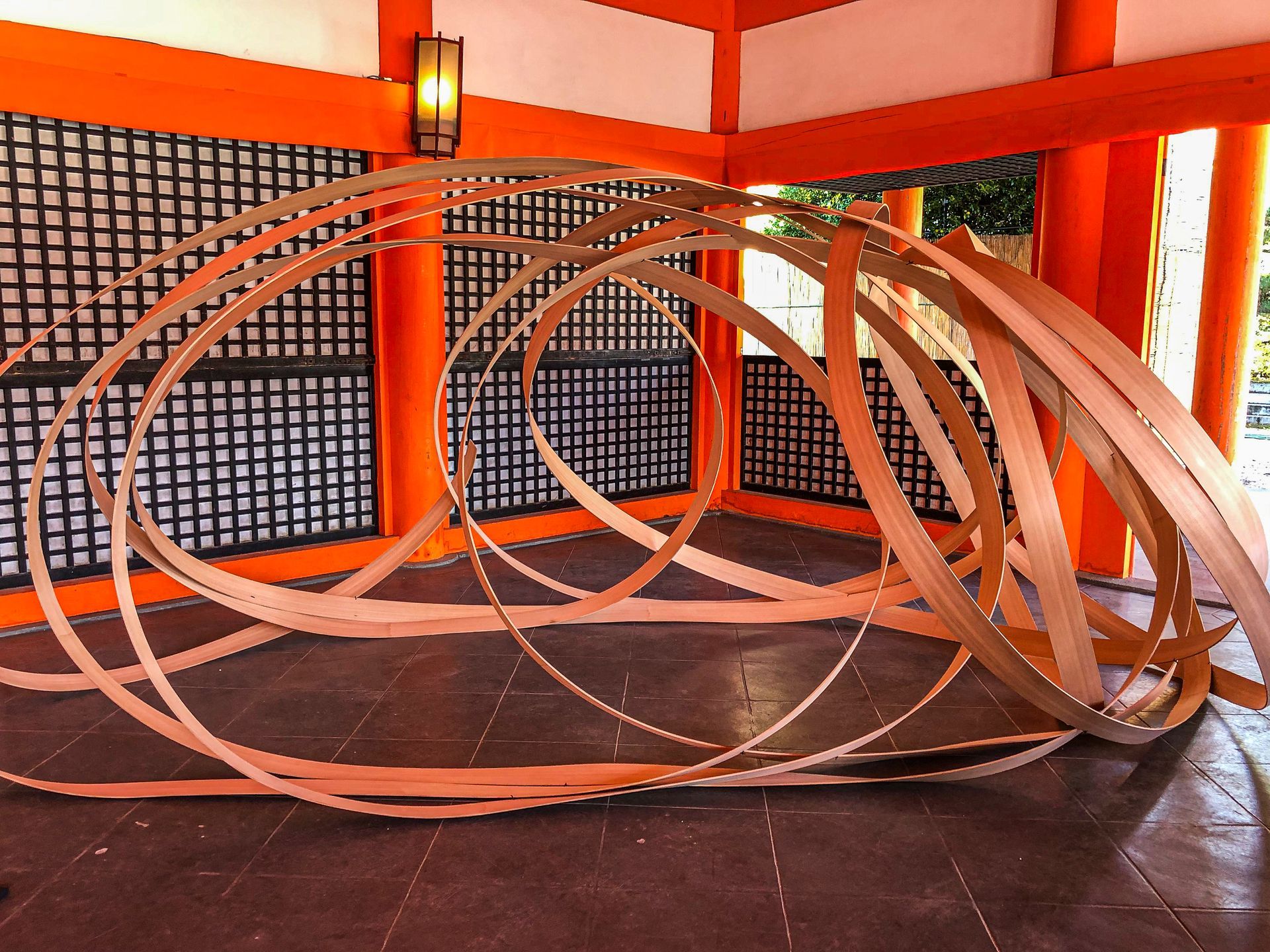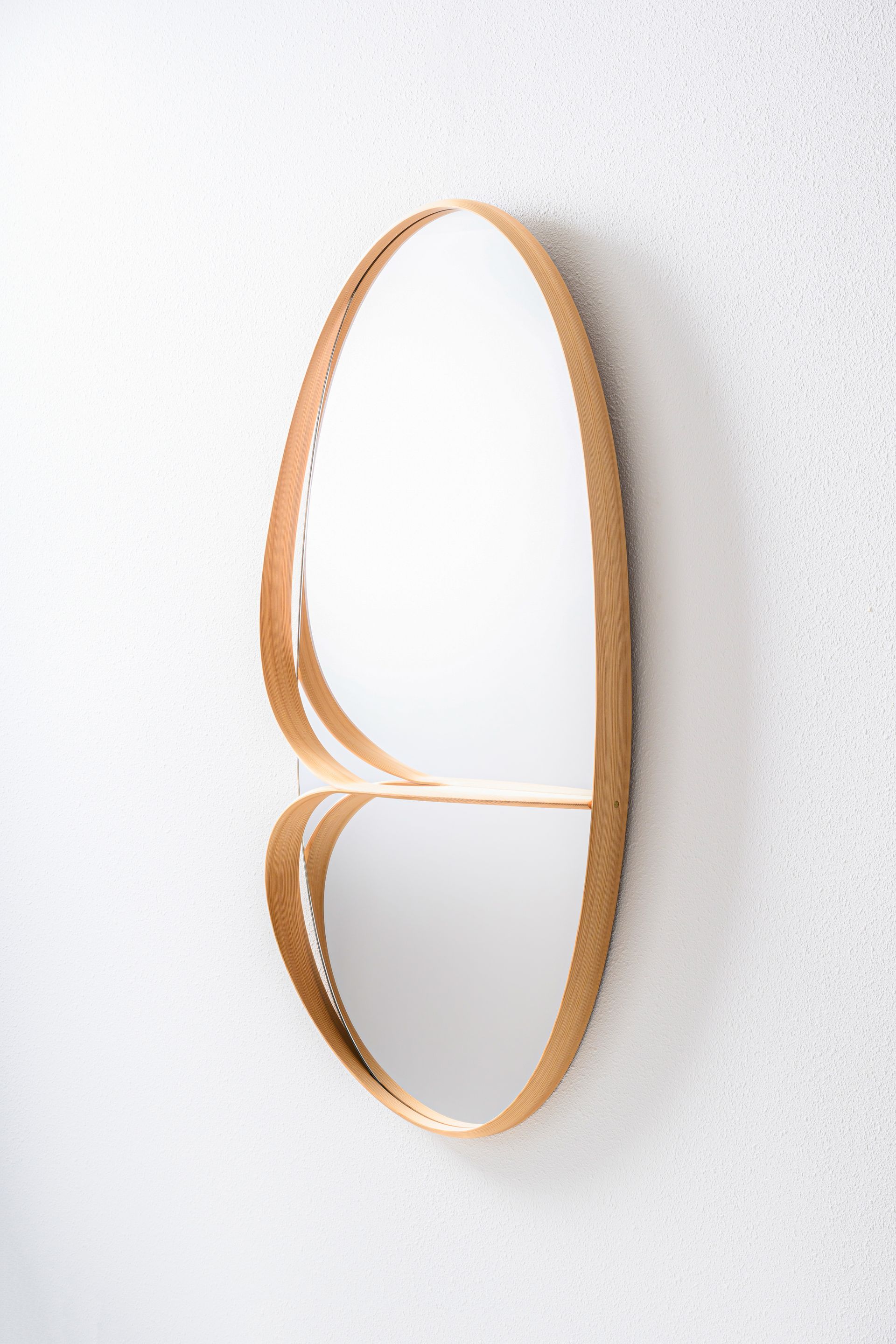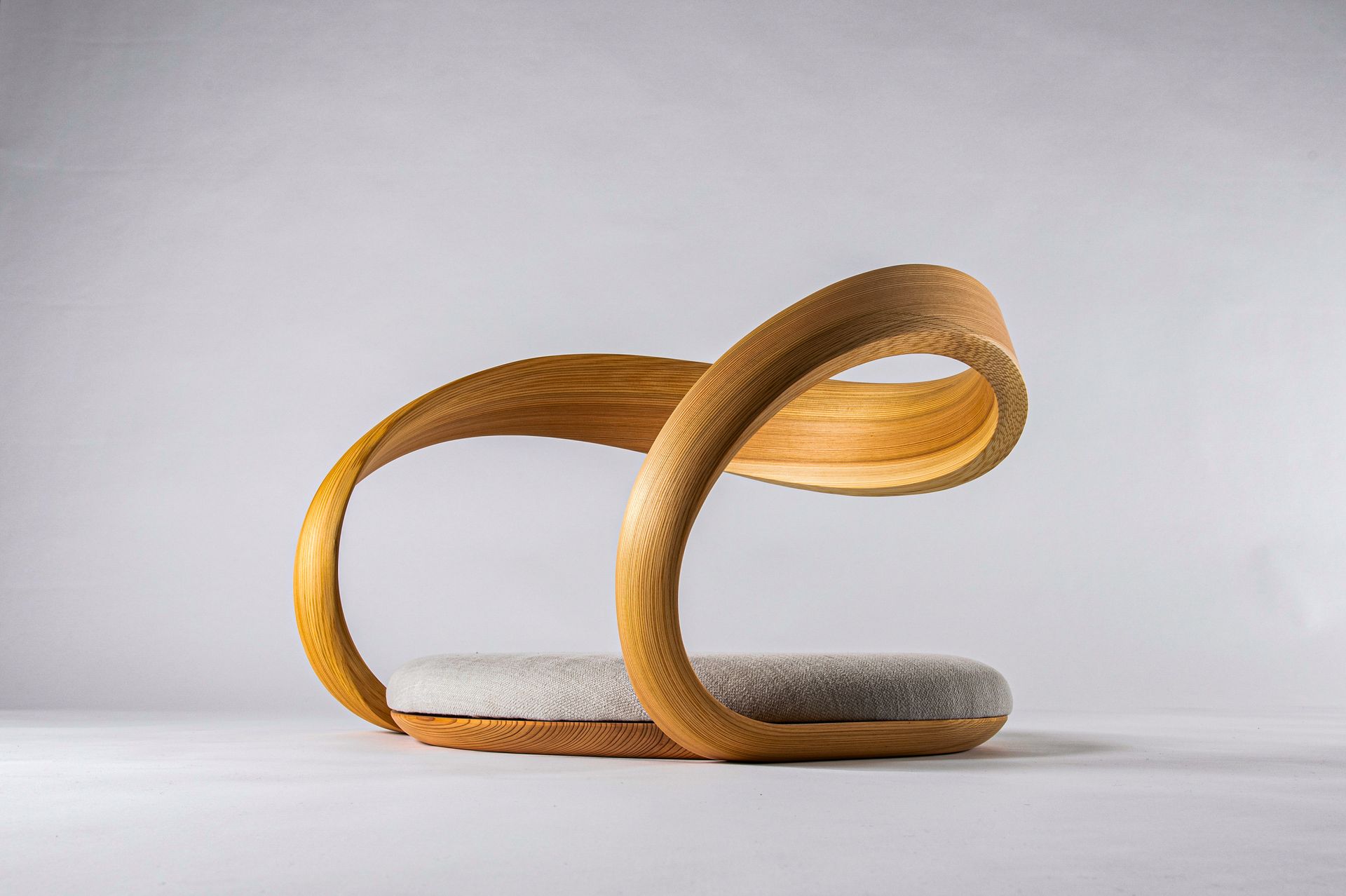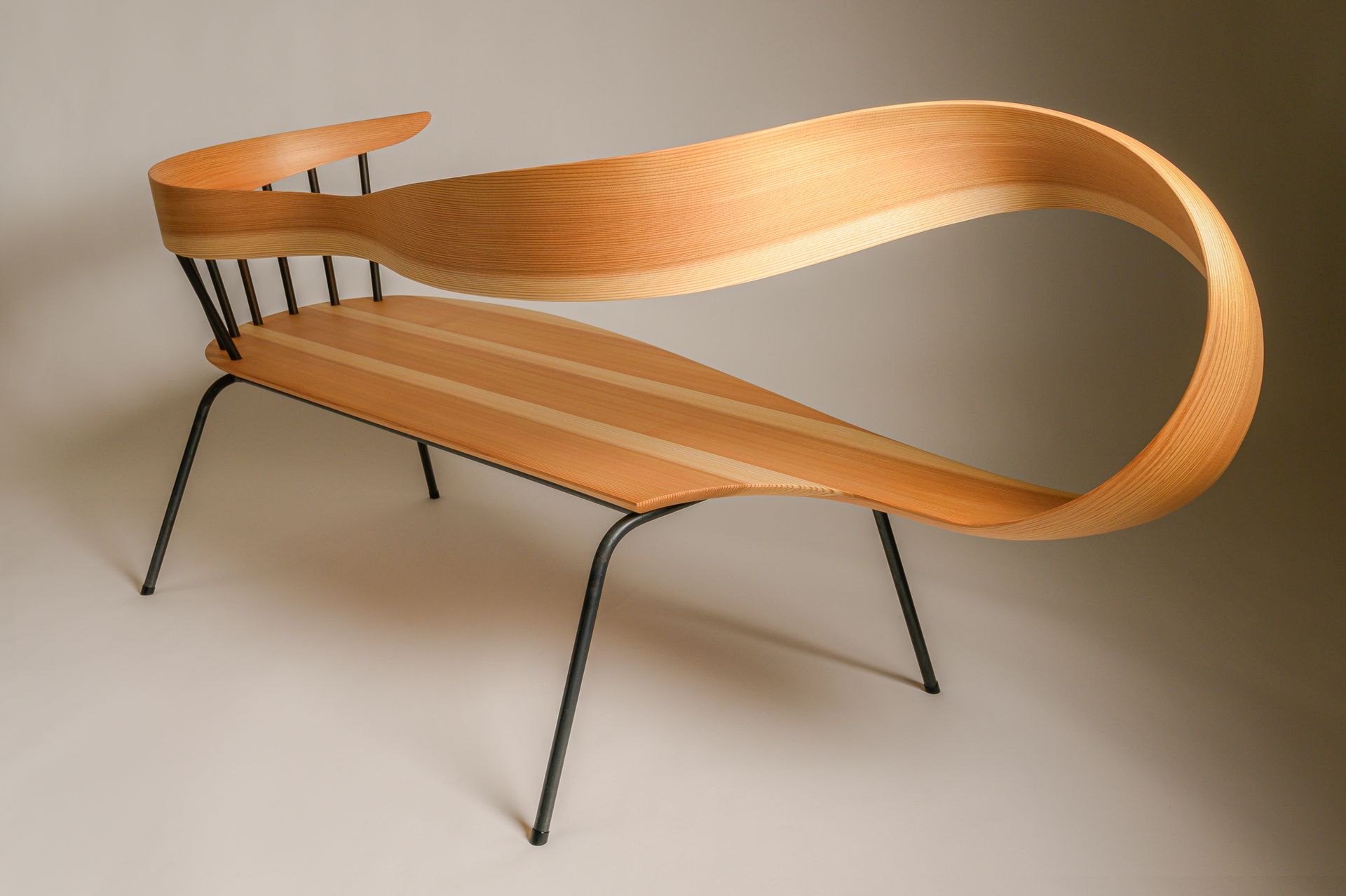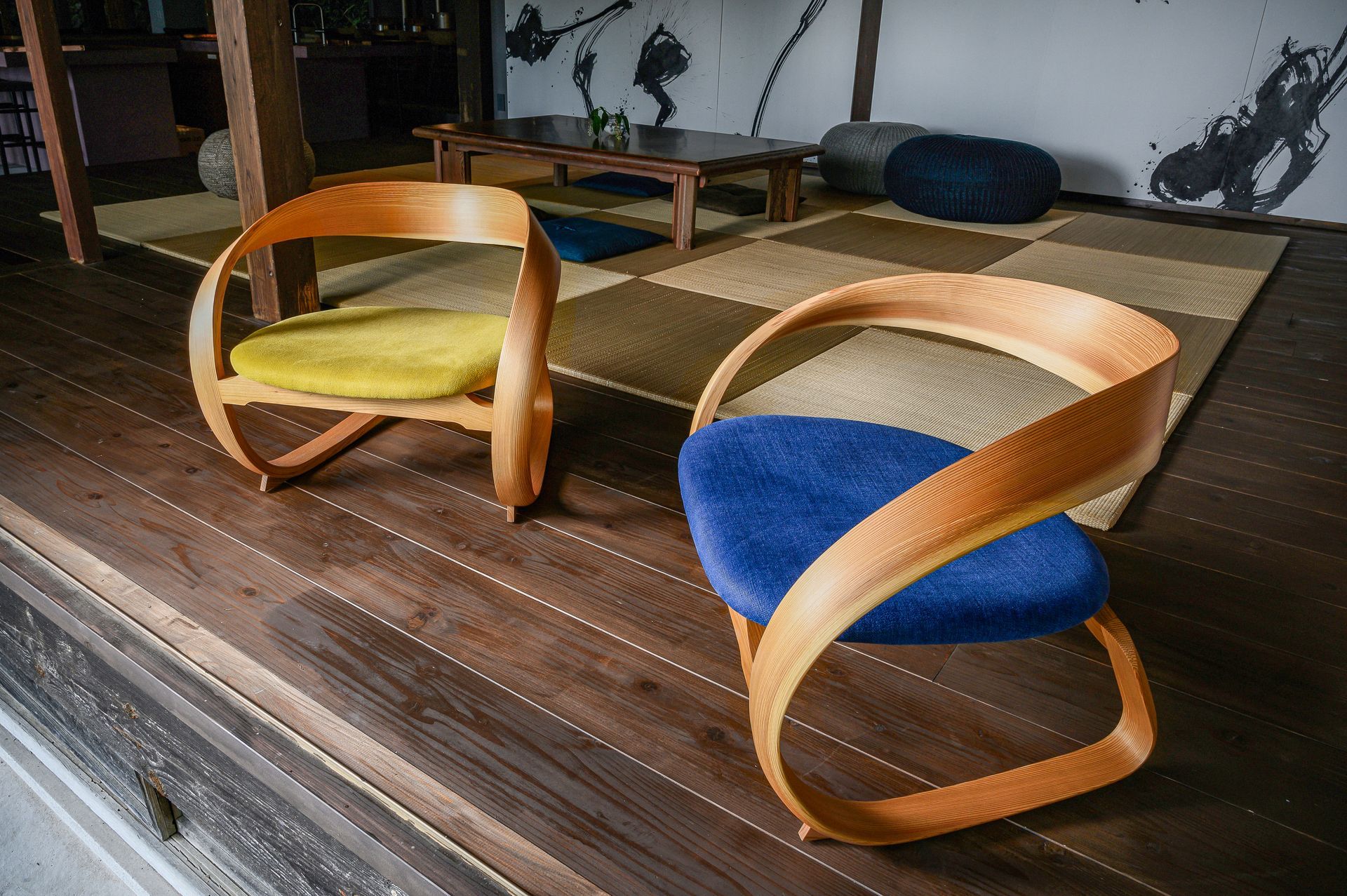Click Image to Enlarge
Write whatever you want about this artwork.
This work can either be a stand-alone, purely decorative piece or a functional stand for an ikebana (flower arrangement) vase. It is crafted by a free-form lamination process using distinctively beautiful Yoshino cedar.
Kenta HIRAI
Wood Furniture ・ Nara
-
Artist's Story
Kenta HIRAI combines exceptional design sensibility with high-level designer skills to produce contemporary wooden furniture using local Yoshino cedar* from Nara Prefecture. Almost knot-free, this wood is known for its fine and uniform annual rings and exceptional color, luster, and fragrance.
“I've always had a strong interest in design and am especially passionate about making things by hand.” Years ago as an art university student, “I was obsessed with questioning conventions and stereotypes, and longed to make furniture that changes our mindsets” -- furniture that has not been seen before. Using free-form lamination, an evolving methodology, Hirai can make furniture in unprecedented shapes. Because his process does not use molds, it allows for a more flexible forming methods that exceeds the limitations of molds.
Japanese cedar is generally considered unsuitable for furniture because of its light weight and softness. Taking inspiration from his love of Yoshino cedar, Hirai has successfully employed the technique of layering and crimping many thin veneers of the wood with an adhesive and is able to achieve the strength required in furniture. Finally, he applies “tatara,” a water-repellent ceramic coating developed by fellow JapanCraft21 Craft Leader, Tokunaga Furniture Studio (see 2022 Craft Leaders), which penetrates deep into the wood fibers, and allows the natural expression and beauty of the cedar wood to be preserved, while adding further strength to ordinarily soft cedar.
* There are many varieties of Japanese cedar (Cryptomeria Japonica) that grow throughout the archipelago.
-
About the Craft
Free Form Lamination is a technique developed by Irish furniture designer Joseph Walsh. The wood is formed by thinly slicing (1.5mm) 120-180 year old Yoshino cedar, stacking 10-18 pieces, bending them and gluing them together, without using molds.
Each composition is created by manipulating and reconstructing thin layers of wood, each layer naturally follows the next, coming from the same tree and following the same path.
-
Click Image to Enlarge
ButtonA long, low bench made of Yoshino cedar and free-form lamination. The base is a natural wood slab that retains a natural edge, with pegs added to increase functionality. The curved free-form lamented backrest allows seating while facing in opposite directions.
-
Click Image to Enlarge
ButtonA stand for flower arrangement made of Yoshino cedar and free-form lamination. The inner surface is part of a collaboration with metal leaf craftsperson and fellow JC21 Craft Leader Kohei Murata, with various kinds of metal leaf and pigment colors affixed with Japanese urushi lacquer. (Teabowl by another JC21 Craft Leader, Katsumi Kako).
-
Click Image to Enlarge
ButtonAnother view of the main image at the top of a flower arrangement stand made of Yoshino cedar and free-form lamination.
-
Click Image to Enlarge
ButtonA small decorative, non-functional installation piece made of Yoshino cedar and free-form lamination.
-
Click Image to Enlarge
ButtonA wall mirror decorated with Yoshino cedar and free-form lamination.
-
Click Image to Enlarge
ButtonA floor chair made of Yoshino cedar and free-form lamination. The curves allow a natural place for hands when getting up from and sitting down on the chair, as well as gentle back support.
-
Click Image to Enlarge
ButtonKenta HIRAI's signature work - a bench of made of Yoshino cedar and free-form lamination.
-
Click Image to Enlarge
ButtonLow chairs made of Yoshino cedar and free-form lamination. The curves allow a natural place for hands when getting up from and sitting down on the chair, as well as gentle back support.
